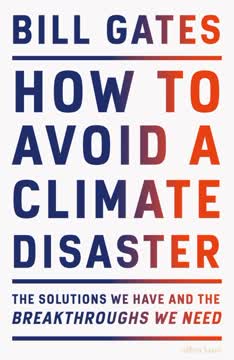Key Takeaways
1. SRE principles can be applied without dedicated SRE teams
"SRE is what happens when you ask a software engineer to design an operations function."
Adaptable approach. SRE principles can be implemented in organizations of various sizes and structures, even without dedicated SRE teams. The core idea is to apply software engineering practices to operations, focusing on automation, reliability, and scalability.
Cultural shift. Implementing SRE principles requires a cultural change, emphasizing shared responsibility for reliability across development and operations. This can be achieved by:
- Embedding SRE practices within existing teams
- Promoting cross-functional collaboration
- Encouraging a "you build it, you run it" mentality
- Fostering a blameless culture of continuous improvement
2. Effective SRE focuses on automating repetitive tasks and reducing toil
"Toil is the kind of work tied to running a production service that tends to be manual, repetitive, automatable, tactical, devoid of enduring value, and that scales linearly as a service grows."
Identifying toil. Toil encompasses repetitive, manual tasks that don't add long-term value. Examples include:
- Manual deployments
- Repetitive configuration changes
- Routine system checks
- Manually responding to common alerts
Automation strategies. To reduce toil, SREs focus on:
- Building self-service tools for common tasks
- Implementing infrastructure as code
- Creating automated testing and deployment pipelines
- Developing runbooks and playbooks for routine procedures
- Leveraging AI and machine learning for predictive maintenance
3. Machine learning enhances SRE by predicting issues and automating responses
"Machine learning refers to the statistical methods used to create algorithms that learn to improve performance over time, with increased emphasis on using computers to statistically estimate complicated functions and proving confidence intervals around these functions."
Predictive maintenance. Machine learning models can analyze patterns in system metrics, logs, and historical data to predict potential issues before they occur. This allows SREs to:
- Proactively address performance bottlenecks
- Predict resource needs for capacity planning
- Identify anomalies that may indicate security threats or system failures
Automated responses. ML-powered systems can:
- Automatically scale resources based on predicted demand
- Implement self-healing mechanisms for common issues
- Optimize system configurations in real-time
- Provide intelligent alerting and incident triage
4. Database reliability engineering is critical for data integrity and durability
"The database tier is the tier with the least tolerance for risk and is thus one of the greatest opportunities for growth through a culture of reliability engineering."
Data protection strategies. Database reliability engineering focuses on:
- Implementing robust backup and recovery processes
- Designing for high availability and fault tolerance
- Ensuring data consistency across distributed systems
- Managing schema changes and migrations safely
Performance optimization. DBREs work on:
- Query optimization and indexing strategies
- Capacity planning for database growth
- Implementing caching layers and read replicas
- Monitoring and tuning database performance metrics
5. Privacy engineering is essential for maintaining user trust and data security
"Privacy engineering is not solely about checking boxes to achieve legal compliance. Rather, it is about developing creative solutions to achieve products that people trust, often according to extremely challenging technical, administrative, and legal requirements."
Privacy by design. Privacy engineering integrates data protection into the development process from the start, considering:
- Data minimization and purpose limitation
- User consent and control over personal data
- Anonymization and pseudonymization techniques
- Secure data storage and transmission
Compliance and trust. Privacy engineers work to:
- Ensure compliance with regulations like GDPR and CCPA
- Implement transparent data practices
- Build user trust through clear communication about data usage
- Design privacy-preserving analytics and machine learning systems
6. Continuous delivery and deployment are crucial for modern SRE practices
"Continuous Delivery is a discipline where you build software in such a way that the software can be released to production at any time."
Automating the pipeline. SREs focus on building robust CI/CD pipelines that:
- Automatically build, test, and deploy code changes
- Implement feature flags for controlled rollouts
- Enable easy rollbacks in case of issues
- Provide visibility into the deployment process
Reducing deployment risk. Strategies include:
- Implementing canary releases and blue-green deployments
- Conducting thorough pre-deployment checks
- Monitoring key metrics during and after deployments
- Automating post-deployment verification tests
7. SRE culture emphasizes learning from failures and continuous improvement
"SRE is a natural extension of DevOps as Continuous Operations."
Blameless postmortems. SREs promote a culture of learning from incidents by:
- Conducting thorough, blameless incident reviews
- Focusing on systemic issues rather than individual mistakes
- Documenting and sharing lessons learned
- Implementing actionable improvements based on findings
Continuous experimentation. SRE culture encourages:
- Controlled chaos engineering experiments
- Regular disaster recovery drills
- Proactive testing of failure scenarios
- Iterative improvements to system resilience
8. Monitoring, alerting, and observability are foundational to SRE success
"If you cannot measure it, you cannot improve it."
Comprehensive monitoring. SREs implement multi-layered monitoring:
- Infrastructure metrics (CPU, memory, disk, network)
- Application performance metrics
- Business KPIs and user experience metrics
- Distributed tracing for complex systems
Effective alerting. Key principles include:
- Alert on symptoms, not causes
- Implement tiered alert severity
- Reduce alert noise and fatigue
- Automate initial triage and response when possible
Observability. SREs focus on building systems that are:
- Instrumented with meaningful logs and metrics
- Traceable across distributed components
- Queryable for ad-hoc investigation
- Visualized through intuitive dashboards
9. Capacity planning and performance optimization are key SRE responsibilities
"You don't have time to babysit."
Proactive capacity management. SREs work on:
- Forecasting resource needs based on historical trends and business projections
- Implementing auto-scaling mechanisms
- Optimizing resource utilization across the stack
- Planning for peak traffic and seasonal variations
Performance tuning. Strategies include:
- Profiling applications to identify bottlenecks
- Optimizing database queries and data access patterns
- Implementing caching strategies at various levels
- Load testing to validate system performance under stress
10. Cross-functional collaboration is vital for effective SRE implementation
"SRE doesn't exist in a vacuum — both organizations work in a larger engineering and product ecosystem with multiple other players, each with its own priorities and goals."
Breaking down silos. SREs work to:
- Foster collaboration between development, operations, and security teams
- Participate in early stages of product design and architecture
- Share knowledge and best practices across the organization
- Align SRE goals with business objectives
Shared ownership. SRE promotes:
- Collective responsibility for system reliability
- Cross-training and skill sharing between teams
- Joint incident response and on-call rotations
- Collaborative problem-solving and decision-making
Last updated:
FAQ
What's Seeking SRE about?
- Focus on SRE Conversations: Seeking SRE is a collection of discussions among Site Reliability Engineers (SREs) about their experiences and challenges in implementing SRE principles across various organizations.
- Diverse Perspectives: It features insights from engineers at major tech companies like Google, Netflix, and Amazon, showcasing how SRE practices can be adapted to different contexts.
- Cultural and Technical Insights: The book covers both technical aspects and the cultural changes necessary for successful SRE implementation, highlighting the interplay between technology and human elements.
Why should I read Seeking SRE?
- Real-World Insights: The book offers practical insights from experienced SREs, making it a valuable resource for understanding the real-world application of SRE principles.
- Community Building: It emphasizes the importance of community and collaboration among SREs, inspiring readers to engage with their professional networks.
- Actionable Advice: Provides actionable advice on implementing SRE practices, useful for both newcomers and seasoned professionals to improve operational practices.
What are the key takeaways of Seeking SRE?
- Context Over Control: Emphasizes providing context to teams rather than enforcing strict control, encouraging ownership and informed decision-making.
- Cultural Change is Essential: Highlights the need for cultural shifts, such as fostering a blameless postmortem culture and encouraging collaboration.
- Diverse Implementation Strategies: Illustrates that there is no one-size-fits-all approach to SRE; organizations may adopt principles based on their unique contexts.
What are the best quotes from Seeking SRE and what do they mean?
- “You build it, you run it.”: Emphasizes that developers should take responsibility for the services they create, promoting accountability and operational consideration.
- “A smart, kind, diverse, inclusive, and respectful community in conversation can catalyze a field like nothing else.”: Highlights the importance of community and collaboration in advancing SRE practices.
- “Toil is the hidden villain in the journey to SRE.”: Points to the challenges of manual, repetitive tasks that hinder progress, emphasizing the need to reduce toil.
How does Seeking SRE define SRE?
- SRE as a Discipline: Describes SRE as a discipline that blends software engineering and operations to create scalable and reliable systems.
- Focus on Reliability: SRE is fundamentally about ensuring services are reliable and available, involving setting clear Service-Level Objectives (SLOs).
- Cultural and Technical Integration: Highlights the need for a culture of reliability alongside implementing the right technical practices.
What are Service-Level Objectives (SLOs) and why are they important in Seeking SRE?
- Definition of SLOs: SLOs are specific measurable goals defining expected service reliability and performance, serving as benchmarks for service health.
- Guiding Operational Decisions: Help teams prioritize work by providing clear targets, ensuring alignment with business goals.
- Error Budgets: Often tied to error budgets, representing allowable error levels, balancing new features with maintaining reliability.
How can organizations implement SRE principles without a dedicated SRE team according to Seeking SRE?
- Embed SRE Practices: Integrate SRE principles within existing development teams, allowing ownership while benefiting from SRE methodologies.
- Focus on Culture: Emphasize a culture of reliability and accountability, encouraging blameless postmortems and open communication.
- Leverage Existing Resources: Gradually adopt SRE practices using existing resources, training developers on operational responsibilities.
What challenges do organizations face when adopting SRE as discussed in Seeking SRE?
- Cultural Resistance: Resistance to change from traditional operations models requires strong leadership and clear communication about SRE benefits.
- Balancing Autonomy and Consistency: Finding a balance between team autonomy and consistency in practices and tools can be challenging.
- Managing Toil: Essential to identify and automate repetitive tasks to free up time for value-adding engineering work.
How does Seeking SRE address the relationship between SRE and DevOps?
- Complementary Practices: Discusses how SRE and DevOps share goals of improving collaboration between development and operations teams.
- Cultural Integration: SRE is seen as a specific implementation of DevOps principles, focusing on reliability and operational excellence.
- Shared Responsibilities: Both promote shared responsibilities for service reliability, encouraging developers to take ownership of their code in production.
What is the role of chaos engineering in SRE as discussed in Seeking SRE?
- Chaos Engineering Purpose: Introduced as a practice to experiment on systems to build confidence in their ability to withstand turbulent conditions.
- Benefits of Chaos Engineering: Helps identify system weaknesses by intentionally introducing failures, allowing teams to improve resilience.
- Implementation: Outlines principles for implementing chaos engineering, including defining steady-state behavior and automating experiments.
How does Seeking SRE suggest managing error budgets?
- Error Budget Definition: Defined as the allowable error for a service, balancing reliability with innovation needs.
- Usage in Decision-Making: Helps teams make informed decisions about deploying new features versus maintaining reliability.
- Monitoring and Adjusting: Emphasizes monitoring error budgets closely and adjusting practices to meet reliability goals.
What is the significance of psychological safety in SRE as described in Seeking SRE?
- Foundation for Team Performance: Crucial for fostering an environment where team members feel safe to express ideas and concerns.
- Encourages Learning from Mistakes: Allows for blameless postmortems, promoting continuous learning and improvement.
- Reduces Burnout: Mitigates stress associated with on-call duties and high-stakes incidents, contributing to a sustainable work culture.
Review Summary
Seeking SRE received mixed reviews, with an overall rating of 4.19 out of 5. Positive reviews praised its insightful content on SRE practices, real-world examples, and discussions on human aspects of the role. Critics noted inconsistency due to multiple authors and repetition. Some found it valuable for understanding SRE beyond Google, while others felt certain chapters were too technology-specific. The book's structure as a collection of essays was both appreciated and criticized, with some readers finding it informative and others struggling with its lack of cohesion.
Similar Books










Download PDF
Download EPUB
.epub digital book format is ideal for reading ebooks on phones, tablets, and e-readers.




